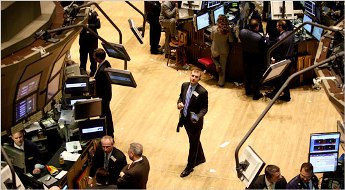Volatile Global Market Forecast – Plunge , Modest , Recovery to Dead Life Cat Theorism
Advice and Guide, Interesting StuffAh, the stock market. Tuesday:Precipitous plunge.Wednesday:Modest recovery. Thursday: Well, for the first little while at least, it was time again.
That’s the perfect recipe for an outbreak of talk about on Wall Street.
This evocative bit of stockbroker drollery : it seems to have first hit print a mere 22 years ago, in a quotation from an unnamed Singapore broker in The Financial Times. And it often takes a minute for habitual users to remember where it originally came from: the somewhat macabre observation that even a dead cat will bounce if dropped hard enough from high enough.
But there’s a rather powerful insight in that, for all the ick factor. It’s an acknowledgement of the huge but often ignored difference between data and knowledge.
Just as a snapshot of an upward-bound cat carcass is no proof that felines can fly, you cannot tell from a single day’s action on the Big Board which way the broader trend in the market is heading, never mind diagnose a decisive “market turn.” Even the bulliest of bull markets include plenty of off days, while the daily arrow will often point upward even in the gloomiest of bear market. It’s a human habit (not to mention an occupational hazard of the news business) to try too hard to glean meaning from the latest zig or zag — but the dead cat is a useful reminder that much of the firehose of daily investment news is noise, not signal.
Why do financial dead cats bounce, anyway? Because of another human habit of mind — the belief that a price that is much lower today than yesterday must, ipso facto, be a bargain. In a market as huge and liquid as that for American common stocks, there will almost always be somebody willing to buy on the dips. Ultimately, the cat’s vital signs depend on how many of these folks there are and how big their appettite is, compared to that of the sellers — and at the opening bell today, the buyers seemed altogether too scarce for the poor tabby’s good, though more seem to have shown up since then.
Another cliche about cats concerns their uncanny ability to somehow survive one dire scrape after another (nine is the usual complement of lives mentioned.) People say things like that about the stock market, too.
But the most apropos cat may be Erwin Schrodinger’s— the one he used in his famous 1935 thought experiment to get at the fundamental uncertainty inherent in quantum physics. There are times when all the ticker data in the world won’t tell you whether the kitty is dead or alive — a thought no more comforting to investors, perhaps, than to the cat.
